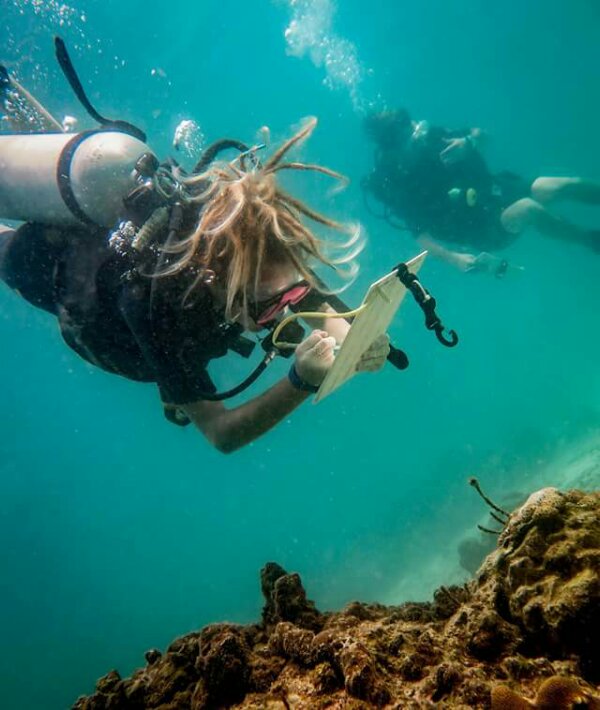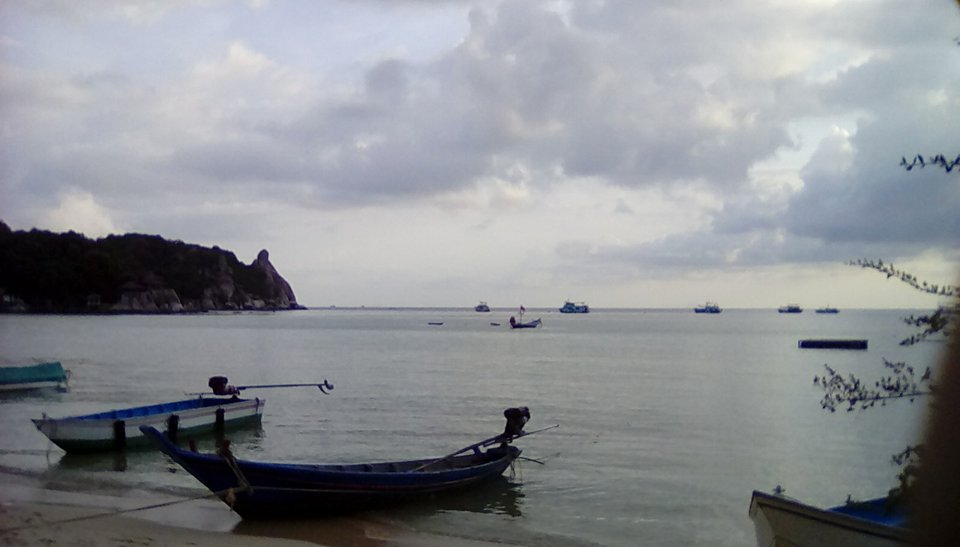

Sawadeeka from Ko Tao, Thailand, my friends. It is pretty crazy it has already been a month at New Heaven Dive school. Time is flying, yikes, now three months sounds too short. Diving with New Heaven is very rewarding because not only do we get to dive everyday but the work we are doing sets it apart from simply “fun dives” (they are even more fun).
I am apart of the Reef Conservation program here on the island. The program was started in 2007 by two sea-savers Chad Scott and Devrim, adding onto the already established dive school (1995). The aim of the program is to educate divers and those interested in the current deteriorating state of our oceans and to provide them an opportunity to conserve our resources. Students come from all over the world to learn from the staff and team here about what is going on under the surface. The first month I was classified as a student, attending two hour lectures each morning about the different projects New Heaven created and heaps of other information about the current health of the coral reef ecosystems and the interdependent system we share with it.
After a month though, I have “graduated” to an intern and can now lead dives of small groups with the staff and do more with the program with my new background knowledge.
The days here are full and salty. A typical day flows like this:
*Wake up at around 6 am and study coral taxonomy. There are so many different types of corals in the ocean and being able to correctly identify them allows for us to use them as indicators of the health of that particular reef and evaluate how it will react to different stressors. For example, coral bleaching affects different corals more-so than others. Lobophyllia, a massive, fleshy coral can sustain times of low tides during the summer months when it is exposed to the sun in comparison to the fragile, branching Acropora. The importance of knowing what types of corals will survive helps the team choose better coral fragments to collect when we are attaching them to the artificial reef structures in shallow areas.
*At about 8:30 I head to the dive shop to help get gear for the students. Right now we have about 20 divers with the program so all of them need BCDs, regulators, fins, wet suits and other equipment for the day.
*9:30 is when the lectures begin, after attending all of them (some of them are shark ecology, sea horse ecology, artificial reef restoration, and invertabrate species) me and the other interns usually prepare restoration bags for the divers or clean the turtle tanks. We currently have three green sea turtles living in our nurseries. The Thai Navy and the Queen of Thailand have a relationship of protecting green sea turtles in the gulf. Basically saying that when a nest is found the Navy is alerted and they go forth and collect 20% of the eggs. They then hatch the eggs and distribute them to various head-start programs, such as New Heaven. The goal is to help these endangered species and bring up a strong population. Right now the numbers are droping of these graceful creatures and a lot of it is effects of humans. From large fishing nets injuring them, construction on beaches, poaching and pollution the sea turtle population is looking slim. An interesting fact I recently learned was that our run off from homes, businesses and sewage plants running over beaches is actually creating an imbalance in gender distribution. Eggs in the middle of nests, being surrounded by the warmth of surrounding, develop into female turtles. Males are the cooler eggs on the outside. However, with warm run off, entire nests are becoming female. This is setting us up for a population of all females greatly decreasing the number of possible sexual partners.
*At noon we head off diving on the boat to various different dive sites. On Mondays we do an ecological monitoring program survey where we go along a transect line and collect data. I choose to do the substrate survey because I find it the most interesting (invertebrate species and fish survey are the others). Along the 100 meter transect line at every 50 centimeters, one identifies the coral, health of the coral or indicator algae. Not a whole lot of the students enjoy this one since it is more tedious and can be quite hilarious when their is a strong current and you are stopping every 50 centimeters trying to look at small corals. My EMPs usually last around 80 minutes in the deep line (around 14 meters). Other dives we do are collecting coral fragments and hitching them or using Epoxy on our artificial reef structures. Also another fun dive is attaching coral fragments to the Biorock. The biorock is a metal structure that is hooked up to a low voltage electrical current that provides energy for free to coral to use in order to calcify their skeletons quicker and being collecting and feeding the photosynthesizing zooxanthellae in their polyps. Zooxanthellae is what gives coral their distinctive colors and when a coral is bleached on the verge of dying, this means that its photosynthesizing life is dying. Creating a source of low voltage energy allows for corals to make a secure skeleton quicker and begin growing larger and channel their energy in photosynthesizing and feeding themselves.
*After each dive we eat some pineapple and joke around with Oh. He is a 16 year old boy that is from Burma and works on the boats. Today he soaked me with a huge hose with sea water when I was teaching how to hitch coral with string and a needle.
*Go back to the shop, wash gear then grab dinner.
*Twice a week I feed the turtles their dinner of raw tuna and put antibiotics on their eye and skin infections. Basically tie dying them with this purple paint like medicine. I really enjoy working with the turtles and interacting with all of the visitors we have during feeding time. Everyone loves the turtles so much and it is great having the opportunity to shine some light on how beautiful they are and in need of our help.
The days are so packed and interesting it is hard to even realize sometimes you actually did all of it. I am still in such a surreal state this is what I get to do every day. Really love it so much and look forward to each day ahead. Time here on Ko Tao has taught me about the sea, blossomed new friendships, fueled my love for diving and satisfied my coconut cravings, which is all the time. I am lucky to call this my home for the next bit and hope all are well back in the states. Hugs and peace!
-Cloconut
